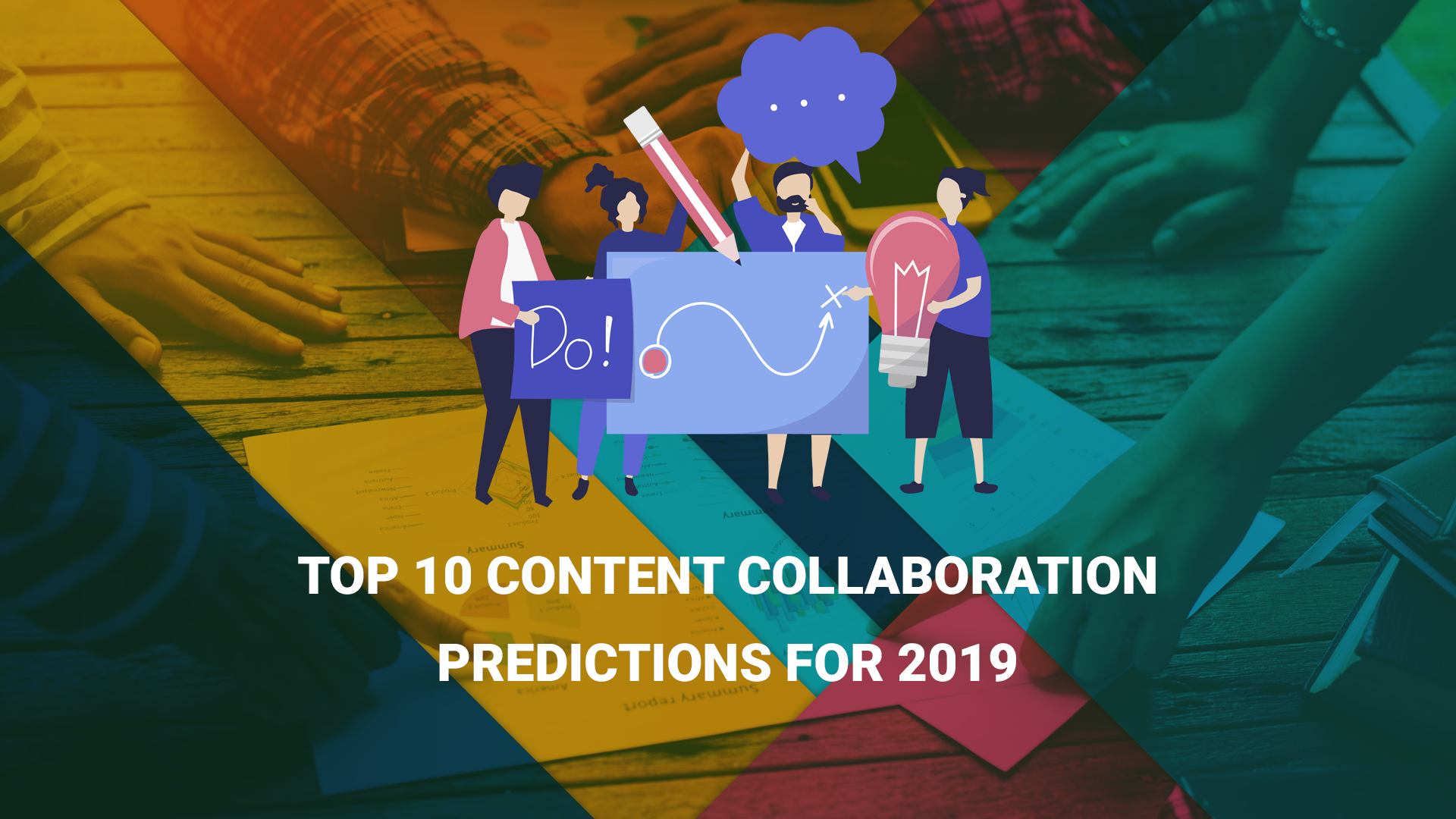As data ownership will be a defining factor for the entire 2019, other countries will follow the EU’s GDPR lead and announce new data regulations, according to the 11th annual VMblog.com series.
With data ownership concerns on the rise, new upcoming privacy regulations and an increase in cyber attacks, it is more important than ever to be able to protect your company’s files as well as your customers’ files.
With a solution like SkyFlok you keep your business secrets and clients’ information and files in a safe place. Our innovative technology protects the privacy of your sensitive information and helps you comply with data privacy regulations and avoid the big fees for non-compliance.
Industry executives and experts share their predictions for 2019. Read them in this 11th annual VMblog.com series exclusive.
Today’s workforce is more versatile than ever with more organizations hiring remote workers. Innovative business collaboration methods can enhance employee productivity by twenty to thirty percent. In a highly competitive industry, this could mean the difference between failure and success. Content collaboration platforms can revamp how teams and individuals work. They add insight and structure when collaboration entails unstructured data, enabling businesses Industry leaders now recognize that collaboration is crucial to productivity, which wasn’t the case a few decades ago.
In a recently published study, International Data Corporation (IDC) forecasts steady growth for the content collaboration platforms market. The market is expected to hit $6.2 billion by 2019. Much of this growth will be driven by the need to connect unstructured collaboration with structured content-centric enterprise processes – primarily for decision making. Teams usually collaborate around content – whether that be video, image or document; and according to Gartner, by 2022 50 percent of large and mid-size organizations in mature regional markets will rely on a content collaboration platform to improve productivity and implement document workflows. With that in mind, let us make predictions about what to expect in 2019.
1. Data ownership will be a defining factor for the entire year
Data is at the heart of every enterprise; it is used to make decisions, define business strategies and even forecast future outcomes. So, not surprisingly, data ownership concerns are on the rise. Data ownership refers to both the responsibility for and procession of information. The control of information encompasses the ability to create, package, modify and extract benefit from the sale or removal of data, while retaining the right to assign these access privileges to others. Recent cybersecurity incidents have cast a spotlight on the ownership of data. Stringent regulations have also put the hammer down when matters of data ownership and privacy are concerned. In 2019, more organizations will assign an individual at the top of the chain, like a Chief Data Officer, to make sure that even federated data ownership can be kept in check.
2. In the wake of GDPR, other countries will follow the EU’s lead and announce new data regulations
The General Data Protection Regulation (GDPR) presented a monumental challenge to companies since failure to comply meant a hefty fine. And while Google searches relating to GDPR may have flat-lined, that doesn’t diminish the regulations’ significance. 2019 will likely see more privacy initiatives rise out of the woodwork.
Around the globe, developing legislation intends to offer transparency to the journey of data, from consumer devices to business websites to data servers. India may soon pass extensive data protection laws, as a Personal Data Protection Bill has been drafted. Chiefly adopted from the GDPR. Axios reported that Gail Slater, special assistant to the President for telecom, tech and cyber policy, is looking into what types of regulations, should be implemented in the United States. This spread of data regulation legislation will be the hallmark for significant progress in consumer protection and increasing awareness of online privacy issues.
3. Complex workloads will migrate to the cloud via hybrid or private cloud
Companies are realizing not all data and workloads are suited for public cloud, mainly because of security, data ownership, and compliance. Need to consider hybrid cloud as part of your multi-cloud strategy. On-premise will provide the best performance and offers low latency. If an organization has invested in on-premise storage, then having a hybrid cloud solution produces not only better performance but also generates significant cost savings. Large vendors such Microsoft, IBM are investing heavily on hybrid cloud.
4. Regulations will drive demand for specialists
As businesses come to terms with data privacy legislation, they must look closely at how they handle data moving forward and train their employees accordingly. Processes and systems will have to be reviewed to make sure that they have the required levels of access, control, and audit. Privacy has now become big business, with contractors, consultants, and lawyers lining up to advise companies on the best way to implement these changes and ensure their procedures and policies are in order. Supply and demand for data security professionals is on the rise.
5. Add-ons will become a major differentiator
The mobile workforce has been granted the comfort they desire and the flexibility they seek to get their work done via the bring-your-own-device (BYOD) concept. It’s not uncommon for organizations to have several platforms that manage their various forms of communication. However, having too many tools and channels to engage with and monitor may hinder productivity. That is where integration and add-ons come into play, and enable multiple platforms and tools to link and seamlessly work with together. In 2019, expect to see integration and tighter coexistence between enterprise tools.
Various industries utilize EFSS for different purposes. A movie studio, for example, will have different file sharing needs than that of a finance firm. Enterprise collaboration platforms that provide the flexibility of integrating to other tools will be the top consideration.
6. Phishing attacks targeting large EFSS will increase
Compounding the risks of data leakage is the looming threat of hackers focused on exploiting the points of failure in your enterprise systems. They are getting craftier and more organized with each passing day – by 2019, they could cost businesses over $2.1 trillion globally. Despite declining susceptibility rates, organizations are still bombarded with spam emails and spam data. The global phishing protection market is forecasted to reach a valuation of $1.8 billion by 2025. The increased level of sophistication of cyber-attacks across several industries like finance and banking, defense, and consumer and retail banking has led to a drastic rise in protection against spear phishing.
7. Need for multi-cloud management tools will increase
Enterprise IT infrastructure evolves and what seems to be working fine today can fail in the near future. Data storage fragmentation across multi-cloud would reduce performance and increase security vulnerabilities. Companies will invest in analytics, monitoring, and management tools for collaboration across multi-cloud. With the right tools, organizations can understand usage, remove bottlenecks and fix vulnerabilities in the current environment.
8. Machine-human collaboration is here to stay
Despite the proliferation of the misguided narrative that machines will eventually replace humans at work; It has already been established that AI has the power to revolutionize the way we work -positively. Using machine learning to further automation efforts is here to stay, and we must interact with them collaboratively. Organizations are more efficient when automation works in tandem with content collaboration. Moving forward, the gains enterprises need will mostly come from automation, which enables workers to free up the time they would otherwise spend on repetitive tasks, and instead focus on work that generates a much higher return for the organization.
9. Intelligent analytics will solidify the position of the intelligent enterprise
The modern enterprise is a data-driven one. Most organizations have realized that using self-service and data democratization tools are crucial to improved decision making. This trend will continue in upcoming years as employees at various levels can no longer afford to waste time waiting for IT to generate a report. Due to the growth and innovations of self-service analytical tools, the process of data-governance will undergo major modifications as well. The future belongs to the intelligent enterprise, which can anticipate constantly changing regulatory, competitive and market challenges and turn them into profit and opportunity.
10. More mergers and acquisitions
The decision makers are constantly innovating and increasingly seeking market expansion via various strategic M&A activities. Enterprise collaboration is driving the need for tighter integration between productivity and support platforms. According to 451 research, in 2016, buyers spent $3.7 billion in this space, more than double the spending of any year since 2007. This growth has largely been attributed to the rise of Software-as-a-service (SaaS) delivery models. This type of consolidation enables customers to have higher-quality options when choosing collaboration tools for their company. When competitors merge overlapping services and products, the end-user subsequently benefits. This reduces concerns not only about a vendors’ legitimacy but also any uncertainties around scale or support.







